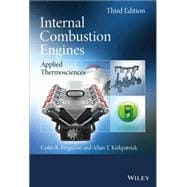Since the publication of the Second Edition in 2001, there have been considerable advances and developments in the field of internal combustion engines. These include the increased importance of biofuels, new internal combustion processes, more stringent emissions requirements and characterization, and more detailed engine performance modeling, instrumentation, and control. There have also been changes in the instructional methodologies used in the applied thermal sciences that require inclusion in a new edition. These methodologies suggest that an increased focus on applications, examples, problem-based learning, and computation will have a positive effect on learning of the material, both at the novice student, and practicing engineer level. This Third Edition mirrors its predecessor with additional tables, illustrations, photographs, examples, and problems/solutions. All of the software is ‘open source’, so that readers can see how the computations are performed. In addition to additional java applets, there is companion Matlab code, which has become a default computational tool in most mechanical engineering programs.








